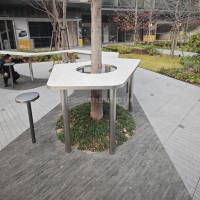Welcome to the website for landscape facilities products and knowledge.
What are the best practices for ensuring stability on sloped or uneven surfaces?
Maintaining stability on sloped or uneven surfaces is crucial for safety, whether hiking, working, or navigating challenging terrain. Here are the best practices to ensure secure footing:
1. Assess the Terrain – Before stepping onto an unstable surface, evaluate its angle, texture, and potential hazards like loose rocks or wet patches.
2. Wear Proper Footwear – Shoes with deep treads and ankle support improve grip and reduce slipping risks. Avoid smooth-soled footwear on slopes.
3. Distribute Weight Evenly – Keep your center of gravity low and shift weight gradually to avoid sudden movements that could cause imbalance.
4. Use Support Tools – Trekking poles, walking sticks, or safety harnesses provide additional stability, especially on steep inclines.
5. Take Small, Controlled Steps – Short, deliberate steps help maintain balance better than long strides, reducing the chance of tripping.
6. Avoid Overloading – Carrying heavy or uneven loads can disrupt balance. Use backpacks with proper weight distribution if necessary.
7. Stay Alert – Constantly scan the ground ahead for changes in terrain and adjust your movements accordingly.
By following these practices, you can navigate sloped or uneven surfaces safely and confidently. Always prioritize caution and adapt techniques based on the environment.
Related search:

Recommendation
An outdoor bar counter with stainless steel and terrazzo materials in an irregular shape